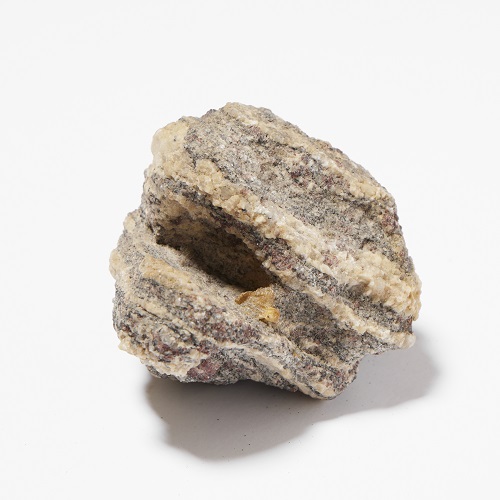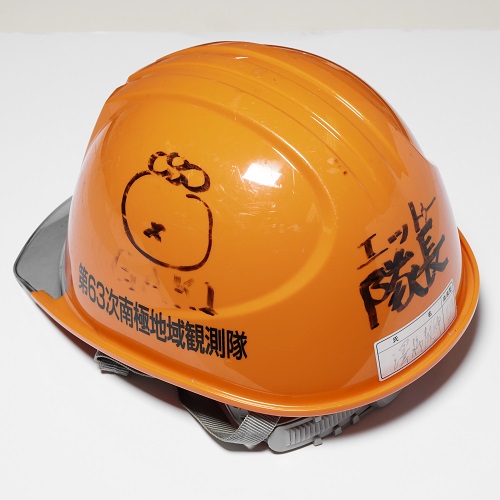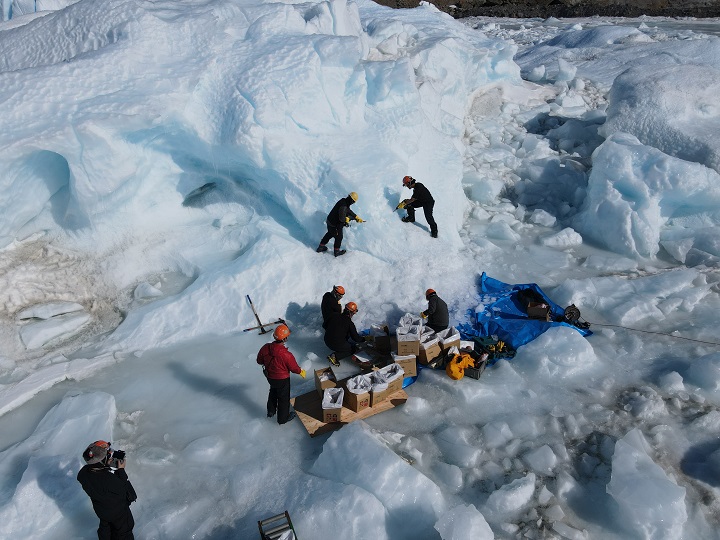reseach
Insights on Global Warming: Findings from the Japanese Antarctic Research Expedition
Takanobu Sawagaki, Professor
Department of Policy Science on Society, Faculty of Social Sciences
Posted Oct.20,2023
Professor Sawagaki is a specialist in glacial geology and has been involved in Antarctic ice sheet research for many years. On his first expedition to Antarctica (1992 to 1994), he discovered curious landforms which suggested the possibility of water drainage beneath the ice sheet. Recently, his discovery has confirmed that liquid water actually exists and flows below the ice sheet. He and his colleagues continues to investigate how much Antarctic ice is melting according to the water under the ice sheets.
The wintering members of the Japanese Antarctic Research Expedition are a small group of select specialists. “Observation of the aurora, measuring the atmosphere, counting the penguin population… We conduct these research projects to uncover the secrets of the polar environment and ecosystem. In the extremely tough conditions in Antarctica, it's imperative that we work closely together to maintain the continuous operation of Syowa Station facilities,” he emphasizes.
On his fourth expedition to Antarctica (2021 to 2023), he served as a wintering station leader, and mostly committed to operational safety management. Talking about his vision for the future, he says, “Currently, the present state of the Earth is regarded as almost at a ‘climate tipping point.’ I hope that many people will learn about the activities of the Japanese Antarctic Research Expeditions, then I would be happy if such knowledge inspire them to take concrete actions.”
You specialize in “glacial geology.” What kind of science is that?
Glaciers and ice sheets are the gigantic clusters of ice found in Antarctica, on the Himalayan mountains, and on the Alps as well. Glaciers do three things: erode soil and rocks, transport materials, and accumulate sediments. Glacial geology is the study to investigate such geological processes of snow and ice which affects on the earth surface environments.
What kind of research have you conducted?
My research is mainly focused on Antarctica. I started my Antarctic study when I found curious landforms on my first Antarctic expedition from 1992 to 1994. What I found were landforms indicating that water might have flowed on the ground surface of Antarctica, where it is so cold that liquid water was thought not to exist. Although those are familiar features to me as a mountain climber, I might have overlooked them if I still had adhered to the conventional idea that there’s no liquid water in Antarctica. “These landforms look like sculpted by running water... but where did the water come from? From under the ice sheet?” One question followed another, and I was in anguish wanting to quickly return to Japan and launch a full-scale study. At that time, similar landforms had been found in Europe and elsewhere, and most researchers interpreted them as having been carved out by ice. There were few researchers who, like myself, thought that it had been eroded by water. However, subsequent studies and research established that there are a number of water storages beneath the Antarctic ice sheet, and the water still drains like rivers. In recent years, we have succeeded in capturing the subaquatic scene under the ice with video cameras as well. It was an incredibly thrilling experience to witness the aquatic life swimming beneath the ice.
Items filled with memories of Antarctica
 |
 |
 |
| 1, Metal fitting from a Syowa Station prefab | 2, Erosional rock surface formed by the blasted strong wind with ice particles | 3, Cup noodle container and a mug |
| A metal fixing plug from the former Radio and Ionosphere Research Building at Syowa Station, established in 1966. The prefabrication technology used for this building was developed in advance to withstand the extreme Antarctic conditions of that era, and it played a significant role in advancing modern architectural technology in Japan. | Ice, propelled by a blizzard, forcefully struck the center of the rock and effectively scooped it out. This is a distinctive phenomenon in Antarctica, where blizzards frequently take place. | These objects were submerged deep in the ocean at depths ranging from 1,500 to 2,000 meters. As a result of the uniformly applied high water pressure, their original rounded shape transformed into well-defined hexagonal shapes. |
 |
 |
 |
| 4, Helmet | 5, Windbreaker | 6, Antarctic ice |
| Helmets are a crucial necessity for work in Antarctica! 'Station Leader Etto' (winter team in Japanese) is indicated on the back. | This windbreakers was rationed out to the expedition team. The number of the expeditions I have participated in so far is sewn into on the sleeve. | As the ice melt, the ancient air bubbles trapped within it make popping or crackling sounds. |

Please tell us about the activities of the Japanese Antarctic Research Expedition.
The Japanese Antarctic Research Expedition consists of specialists from various fields, including scientific researchers, facility and equipment maintenance engineers, cooks, and medical doctors. Researchers conduct many kinds of studies, such as observing the aurora, measuring high altitude atmosphere, and investigating the penguin population. All of these individuals make significant contributions to environmental and ecosystem sciences. However, the expedition team, especially the wintering team, is a very small group of just 32 select specialists, often assisting with tasks beyond science, such as maintaining power generators. While cutting-edge research activities are crucial, the primary focus of our mission has been to maintain the operation of all facilities at Syowa Station, which has continued for the past six decades. To this end, all of our members work together and survive under extremely harsh conditions.
-

The frozen landscape of Syowa Station around noon in early August, with the air temperature plummeting to -35°C. While the sun is still below the horizon, the sky takes on a red hue resembling a sunset.*
-

As a recreational activity during the Mid-winter Festival, we dug a snow cave and gathered around a hot pot to enjoy a hot meal.*
Please tell us about serving as winter team leader on your fourth expedition to Antarctica.
The primary responsibility of a wintering station leader is to ensure the safety of the wintering team. In Antarctica, clear skies can quickly transform into blizzards of such ferocity that visibility is reduced to less than one meter within just a few minutes. To ensure the team's safety, I, as a leader, must promptly and accurately issue mandatory directives, such as curfews, sheltering in place, and prohibiting solo activities. Also, it’s essential to take care of the members’ physical and mental health.

Every year at the end of the winter season, we collect Antarctic ice to bring back for promotional activities.*
*Picture courtesy of the National Institute of Polar Research
How will the research results you have obtained be used?
On the results of our research expeditions, we could tell that the rising sea water temperature due to global warming is gradually melting the ice shelves (the ice around the rim of Antarctica). Currently, we are also investigating how the water storage under the ice sheet affects the ice sheet melting, which leads to the global sea level rise. While it may not be possible to halt global warming itself, we believe that by elucidating phenomena occurring in the present, we can take action for the future. Furthermore, we have established a new drilling camp, 'Dome Fuji Site II,' and have handed it over to the next expedition team for further preparations. Japanese scientists have recently estimated the existence of the world's oldest ice, potentially dating back up to one million years. A Japanese research team is planning to retrieve this ice, a feat never before accomplished by any other country. I'm excited to see what discoveries await us within this ancient ice.
Realize Future Dream through Research
It is evident that global warming is advancing, and the current state of the Earth is considered to be approaching a 'climate tipping point.' Our future depends on what actions we take now to prevent the Earth from reaching the tipping point. The wintering team organizes the 'Antarctica classroom' for elementary and middle school students, aiming to raise awareness of our activities. I hope this initiative inspires each person to take action against the climate crisis. My aspiration is to advance research on the Antarctic ice sheet and pass on the knowledge to the next generation.
Takanobu Sawagaki, Professor
Department of Policy Science on Society, Faculty of Social Sciences
Graduated from Hokkaido University Graduate School of Environmental Science Ph. D (Environmental science). Specialist in glaciology and physical geography. After working at Hokkaido University, he joined Hosei University in 2015. Experience of participating in four Japanese Antarctic Research Expeditions between 1992 to 2023, and was the first faculty member from a private university of Japan to serve as the wintering station leader in Antarctica from 2021 to 2023 (the 63rd Japanese Antarctic Research Expedition).

